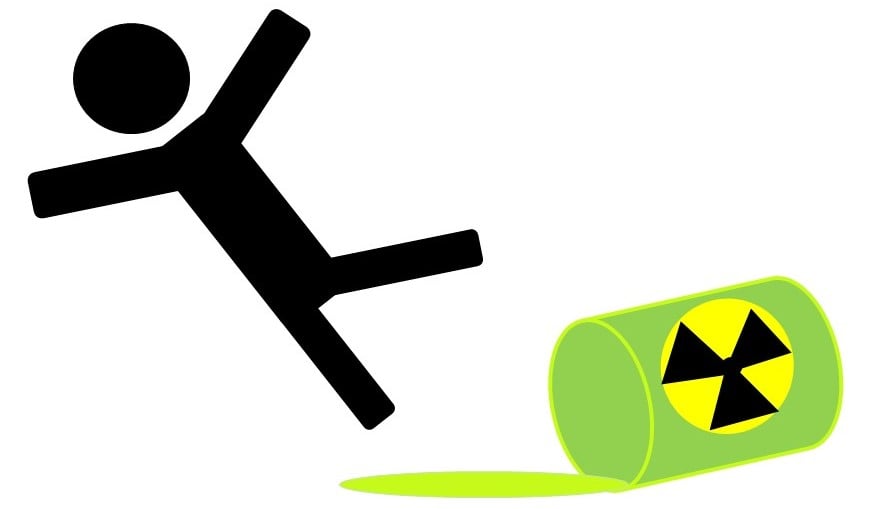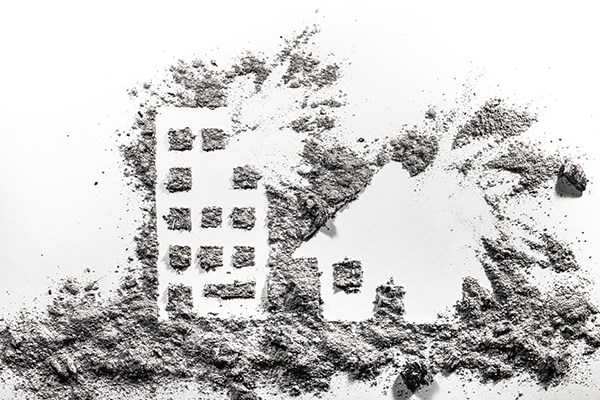You are working the night shift in a small community hospital when you get a call from EMS. There has been a large explosion at a nearby nuclear power plant, and there are multiple casualties. Are you prepared?
Blast injuries are a subset of trauma with a unique spectrum of injuries. While historically blast injuries were primarily encountered in the military, they are becoming more common in civilian life secondary to an increase in domestic and international terrorism attacks. Unrelated to terrorism, there is always the potential for explosions in our communities from neighboring nuclear power plants, chemical production facilities, or illegal drug production. It is important for emergency physicians to be aware of the types of injuries that can be sustained from explosions and be prepared to treat these injuries, as there is no way to predict when they will be encountered (Table 1).
Table 1. Blast Injury Categories
|
CATEGORY |
MECHANISM |
INJURIES |
|
Primary |
Direct effect of the blast wave |
Concussion, globe rupture, bowel perforation, tympanic membrane (TM) rupture, middle ear injury and blast lung injury |
|
Secondary |
Impact of airborne debris from the blast wind |
Penetrating or blunt trauma |
|
Tertiary |
Victim being thrown by the blast into an object or from structural collapse |
Blunt trauma, crush injuries, fractures, amputations, or head injuries |
|
Quaternary |
All other injuries |
Burns, radiation exposure, inhalation injury, chemical exposure, asphyxia, and exacerbation of chronic disease |
Explosives
High order explosives are categorized as military quality and are manufactured (TNT, C-4, and dynamite). These explosives produce a supersonic over-pressure shock wave. Low order explosives, including gunpowder, do not produce this pressure wave. The severity of injuries is determined by the explosion’s location, type, and amount of explosive used, proximity and position of victims in relation to the blast, and explosion occurrence in an open or closed space.
Categories of Injuries
Blast injuries fall into 4 categories — and patients can suffer more than 1 type of blast injury.
Primary injuries are a direct effect of the blast wave from a high order explosive (Figure 1).
These injuries are secondary to the rapid air pressure changes and occur at air/fluid interfaces and in gas containing organs. Examples include: concussion, globe rupture, bowel perforation, tympanic membrane (TM) rupture, middle ear injury, and blast lung injury. Blast lung injury results from tearing of the alveolar-capillary interface, presenting similar to acute respiratory distress syndrome (ARDS) or contusion, with a mortality rate of up to 70%.1 Complications include hemothorax, pneumothorax, and air embolism from pulmonary lacerations.
Secondary injuries are caused by the impact of airborne debris from the blast wind (Figure 2).
These injuries include penetrating and blunt trauma, and they comprise the majority of the injuries of patients presenting to the ED.2
Tertiary injuries are caused by a victim being thrown into an object by the force of the blast, or from structural collapse (Figure 3).
These injuries may present as blunt trauma, crush injuries, fractures, amputations, or head injuries. Complications include rhabdomyolysis, compartment syndrome, and acute kidney injury.
Quaternary injuries comprise all other injuries, including burns, radiation exposure, inhalation injury, chemical exposure, asphyxia, and exacerbation of chronic disease (Figure 4). Decontamination is of the utmost importance with chemical or radiation exposure.
 |
 |
| Figure 1. Primary blast injuries can lead to hemothorax, pneumothorax, air embolism | Figure 2. Secondary blast injuries include penetrating and blunt trauma |
< |
 |
| Figure 3. Tertiary blast injuries can lead to rhabdomyolysis, compartment syndrome, acute kidney injury | Figure 4. Quaternary blast injuries include a range of presentations |
Triage Challenges
Triage after an explosion is unique, as approximately 50% of victims will arrive in the emergency department within the first hour after detonation.2,3 This first wave is composed of the “walking wounded” — or the less seriously wounded victims who bypass EMS and present to the hospital by other means of transportation. The initial number of victims seen can help you estimate the remaining casualties and plan for further resources.
Assessment
ATLS protocol should be followed for victims presenting to the emergency department. Secondary and tertiary surveys should focus on ENT, ocular, and neurological examination as secondary and tertiary injuries may distract from primary blast injuries. While classically taught that blast victims with an intact TM are at low risk for primary blast injuries, one study found that an intact TM missed up to 50% of patients with PBI to the lung.4 A perforated TM should raise suspicion for additional primary blast injuries. Patients presenting with complaints of chest pain or shortness of breath should receive a chest x-ray to assess for blast lung injury. If there is evidence of blast lung injury, provide supplemental oxygen as needed and be cautious with fluid administration to avoid fluid overload. Positive pressure ventilation should be avoided if possible, however if necessary, small tidal volumes and low pressures are preferred to decrease risk of pneumothorax or arterial air embolism.5
Conclusion and Take-Home Points
- Follow ATLS.
- Don’t forget to decontaminate.
- Patients suffering primary blast injury are more likely to have greater injuries from secondary and tertiary injuries.
- Secondary blast injuries comprise the majority of the injuries.
- Don’t take an intact TM for granted.
References
1. Mallonne S, Shariat S, Stennies G, et al. Physical injuries and fatalities resulting from the Oklahoma City bombing. JAMA. 1996;276(5):382–387.
2. Garner J, Brett SJ. Mechanisms of injury by explosive devices. Anesthesiol Clin. 2007;25(1):147–160.
3. Gutierrez de Ceballos JP, Fuentes FT, Diaz DP, et al. Casualties treated at the closest hospital in the Madrid, March 11, terrorist bombings. Crit Care Med. 2005;33(1 suppl):S107–S112.
4. Peters P. Primary blast injury: an intact tympanic membrane does not indicate the lack of a pulmonary blast injury. Mil Med. 2011 Jan;176(1):110-4.
5. Sorkine P, Szold O, Kluger Y, et al. Permissive hypercapneia ventilation in patients with severe pulmonary blast injury. J Trauma. 1998;45(1):35–38.



